Amazing Animal Sleeping Habits – 10 Pictures + 1 Video
Eight uninterrupted hours, and the cozy pillow beneath our heads – that's all we need to get a good night's sleep. But what about animals? What's their notion of a good rest? The extraordinary variety in the animal kingdom has accounted for the development of some fascinating sleeping habits. From the curious sleeping position all the way to the 3-years-long snoozes, let's list some of these habits. Oh, and then let's answer the all-Important question: do animals dream?
1. Albatross
Some birds live fast, and cannot waste time in slumber. Albatross, gliding across open waters in search of prey, can take some quick z's while in full flight. Sleeping on the water, as they sometimes do, proves to be very dangerous, so albatrosses decided to multitask.
1 / 11
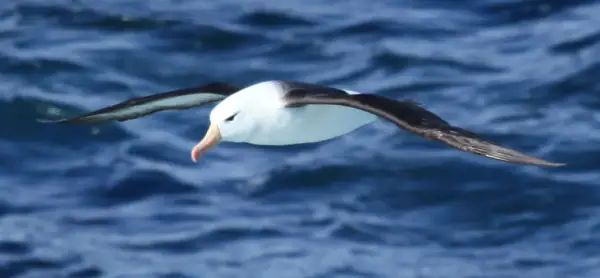
2. Desert Snail
Without a doubt, hands-down the undisputed heavyweight Champion in the category of the longest sleepers. This little guy can sleep off the entirety of three summers! There's a story that a British Museum worker regarded the shell of the Egyptian desert nail empty, and put it onto an identification card. Four years later, the card showed some traces of slime, proving that the snail was there all along, inside a shell, just a little tired.
2 / 11
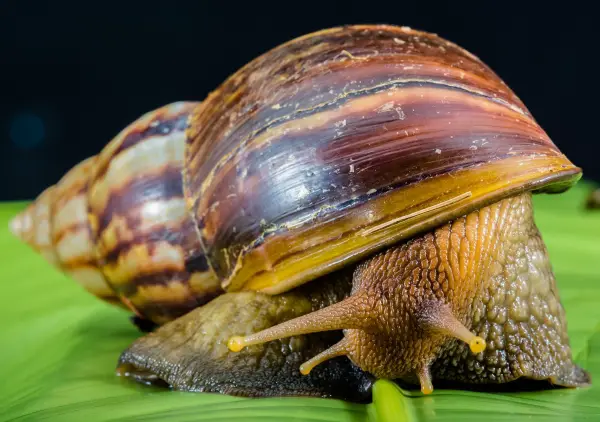
3. Giraffe
On the other side of the longevity spectrum is the giraffe. And truly, if you were a giraffe, you'd also think twice before dozing off. Living in a harsh environment and having such a slender figure, giraffes are often targeted by predators. Hence, born out of necessity, they devised the plan never to sleep more than 20 minutes a day. And it can take weeks before a giraffe takes even this short nap.
3 / 11
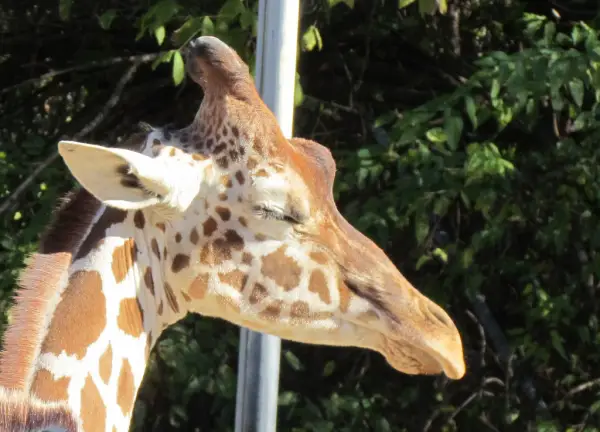
4. Ducks
Rarely would you find a lone sleeping duck. They instead nap in groups, assuming something of a defensive formation. They queue up, several of them, with the ending ducks very much awake, keeping watch should any uninvited guest burst in. These little fellows clearly have to learn a few tricks from their elders.
4 / 11
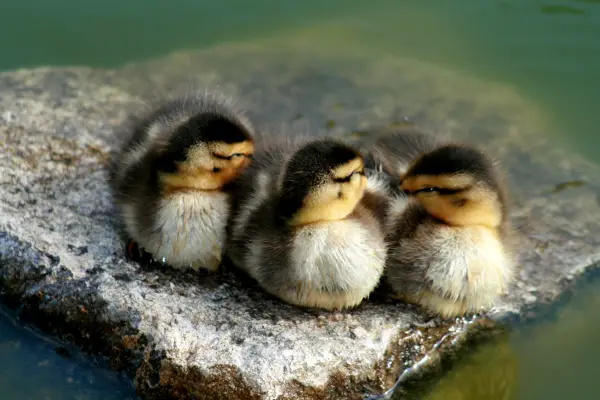
5. Dolphins
Dolphins are peculiar creatures indeed. We often regard them for their beauty, their brains, and for their sociability, but we should also regard them for the way they sleep. Namely, they doze off with one eye always open! Here's the laymen science behind it. Dolphins never really sleep, they only half-sleep, turning off only half of their brain. The eye that corresponds with that half is closed, while the other eye stays ever-open, alert to the surroundings.
5 / 11

6. Sperm Whale
The majority of whales share sleeping habits with their dolphin cousins, sleeping with half a brain on. However, there's a group of whales that have a distinct manner of sleep. Sperm whales, with their deep, full slumber, turn vertical while sleeping. This was found out only recently, when a group of researchers stumbled upon a group of sleeping sperm whales and accidentally grazed one of them. Never seeing the vessel coming, all the whales waked up on touch and fled to their assumed safety.
6 / 11
7. Fire Ants
Due to their relentless diligence, there's an opinion that ant workers never snooze. Not true. Fire ants snooze, and do so about 200 times a day! But sleep, or snooze, might be an exalted term for what these ants do; they take cyclical periods of rest, with each period lasting barely a minute.
7 / 11
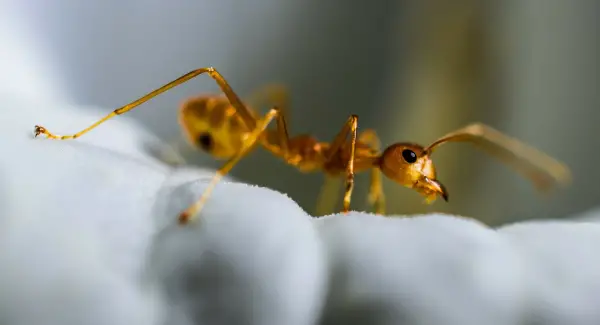
8. Bats
The popular notion is true, bats do indeed sleep upside down. Still, the reasons for this are not all that obvious. First, the reverse position makes them an unlikely prey. And secondly, since bat wings aren't among the strongest, their sleeping position makes it much easier for them to take off: they literally “fall” into flight.
8 / 11
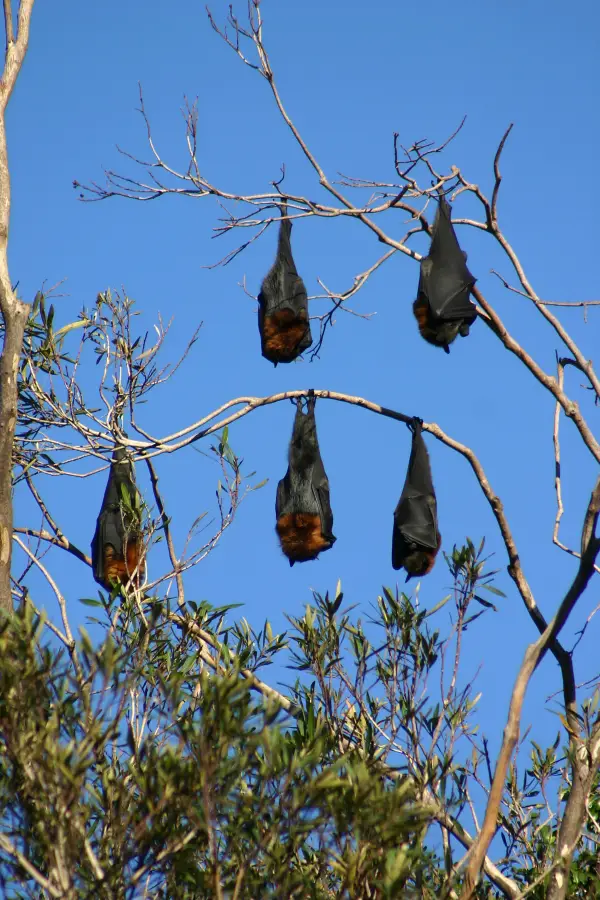
9. Elephants
Elephants, alongside cows, zebras, and horses, can sleep while standing up. They can lock their legs in a way that isn't tiring and take a quick nap. This manner of napping isn't deep though, as reaching REM sleep is only possible when they lie down.
9 / 11
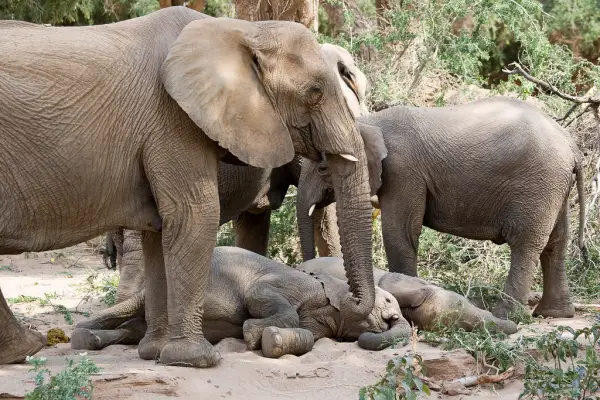
10. Seals
While seals often take to ground while sleeping, they're much more fun when they doze in the water. Most often they'll do what is called “bottling”, take a position where a seal resembles a bottle – their full body submerged, only shout above water.
10 / 11
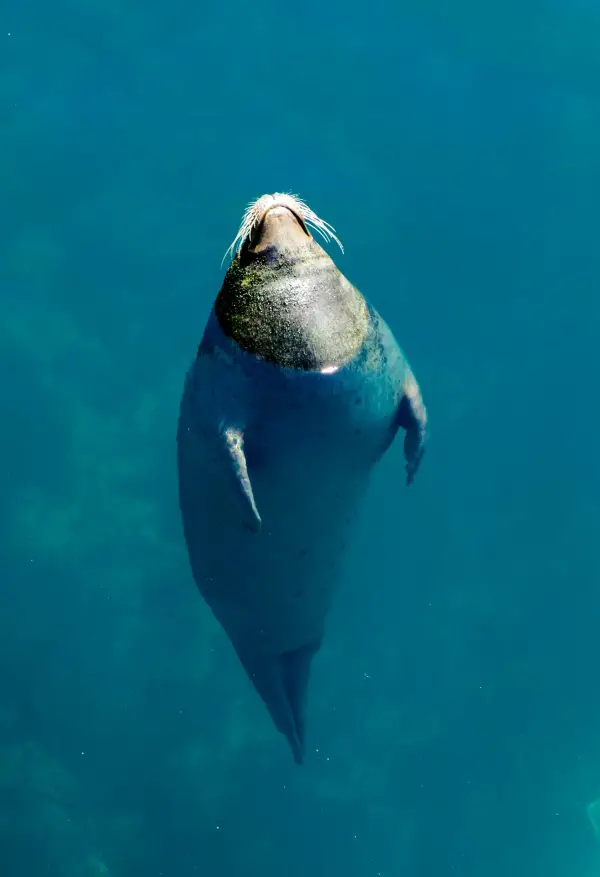
11. Do They Dream?
It's very likely that they do. While we should be careful to dub it dreaming, animals certainly experience some sort of activity in their brains during sleep. We cannot dip in there of course, but based on their physical behavior, the scientists concluded that animals do indeed recall the sequences of events they've been through. Moreover, all mammals have the same neural structure, and are capable of entering REM sleep. In the end, while we shouldn't liken our dreams to theirs, there's certainly something going on in there.
11 / 11
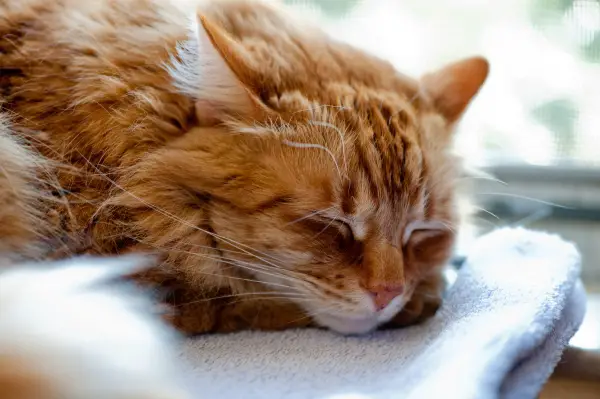
Image Sources:
- upload.wikimedia.org/wikipedia/commons/3/39/Blackbrowed_Albatross_flying_over_the_South_Atlantic_(5544283972).jpg
- pixabay.com/en/snail-slimy-land-snail-reptiles-424132/
- flickr.com/photos/fromtheroadphotographymm/5169203405/in/photolist5rRbFU7uc3Y-kUZVLn-aoi39e-bjBnrk-9g9WbS-8SMw5D-3i2inj-opT8YR-6uVQyX-8zj5ou-8zj51d-6dmVK3-6XXwg9-5h8wjj-5mcDbx-xXDFU-xXFMi-bmjPng-7qALw1-njnkEG-5pBrUb-e5cHkW-65jDZE-5mcCKk-bpoTVd-6fSjwn-a2bK3a-6fSjVv-6bLBGg-7qyofv-CLDYxA-CTsQVA-zrsdCV-5XZygL-7qwZJ4-ou4YKr-mFeJzx-9VHTe6-dwvE4A-7qAME1-cksvEL-9e6CrM-w5CNsr
- upload.wikimedia.org/wikipedia/commons/6/63/Mallard_ducklings.jpg
- flickr.com/photos/gemstone/3043004906
- youtube.com/watch?v=HengPojNgbM
- pixabay.com/en/red-ant-ant-macro-insect-319067/
- upload.wikimedia.org/wikipedia/commons/7/71/GreyHeadedFlyingFox.jpg
- flickr.com/photos/gregw66/3689579663/in/photolist-6C34ut-fMY4z-6zQg3n-sbaMKt-8pQUCi-hpyfCw-csMzNq-dRsLkh-ixj2HW-5iH6MG-djRriP-bdM9yv-6ihwmg-2c19bL-3bY1Gj-ojbe-65SAMm-t7zkj-4i5GdN-8H3CZW-8KGAyF-4C9QNf-AVUzv-7BA6ND-6kAdNB-6kEFcN-6kA1Qz-6kEdMs-fzJyMT-4vSUZJ-5rRbFU-7uc3BY-ehrD5B-7vSBHk-8Upoh6-6kExbo-tSw1Dc-r7vfoz-62EGfY-5FSxkt-5hiSRy-evnfaY-aP4Q7c-3eGTFA-65Nnbt-65NdKx-5PhxdX-4C9Q6Q-J7iBPj-6kEjhE
- pixabay.com/en/seal-water-breathing-rest-animals-174116/
- flickr.com/photos/photofarmer/6941234664/in/photolist-bznDeJ-kBooE6-5ww64F-frRYvV-hnWPt9-jz4TQR-acZ3Bf-dTc5Ad-aJm4Hc-jJGr2y-ocbxbX-DrkWVE-e58osK-esPH9c-dPboxF-fQEwkH-hybuLk-qmwAQ1-beupjD-6372mk-8Bkzgc-dHfiNh-9rTsmh-azbRLk-baQARD-92L6Ru-a48HVk-AaVCnz-frTSVK-92GZyx-c82DS5-eU2cEJ-oeejVz-5y6wGL-5cDdqu-iRhKvk-7uDV6D-37jrJm-bdJbt4-2dqvhc-xCY83L-GF6SR-dq1eDa-9U8chm-dMUDrM-4tYMke-Nsy3f-5p92XZ-BPN8J6-4b1rJm
